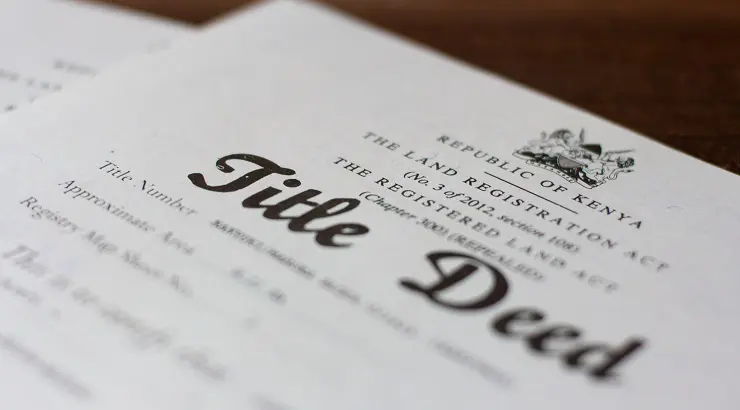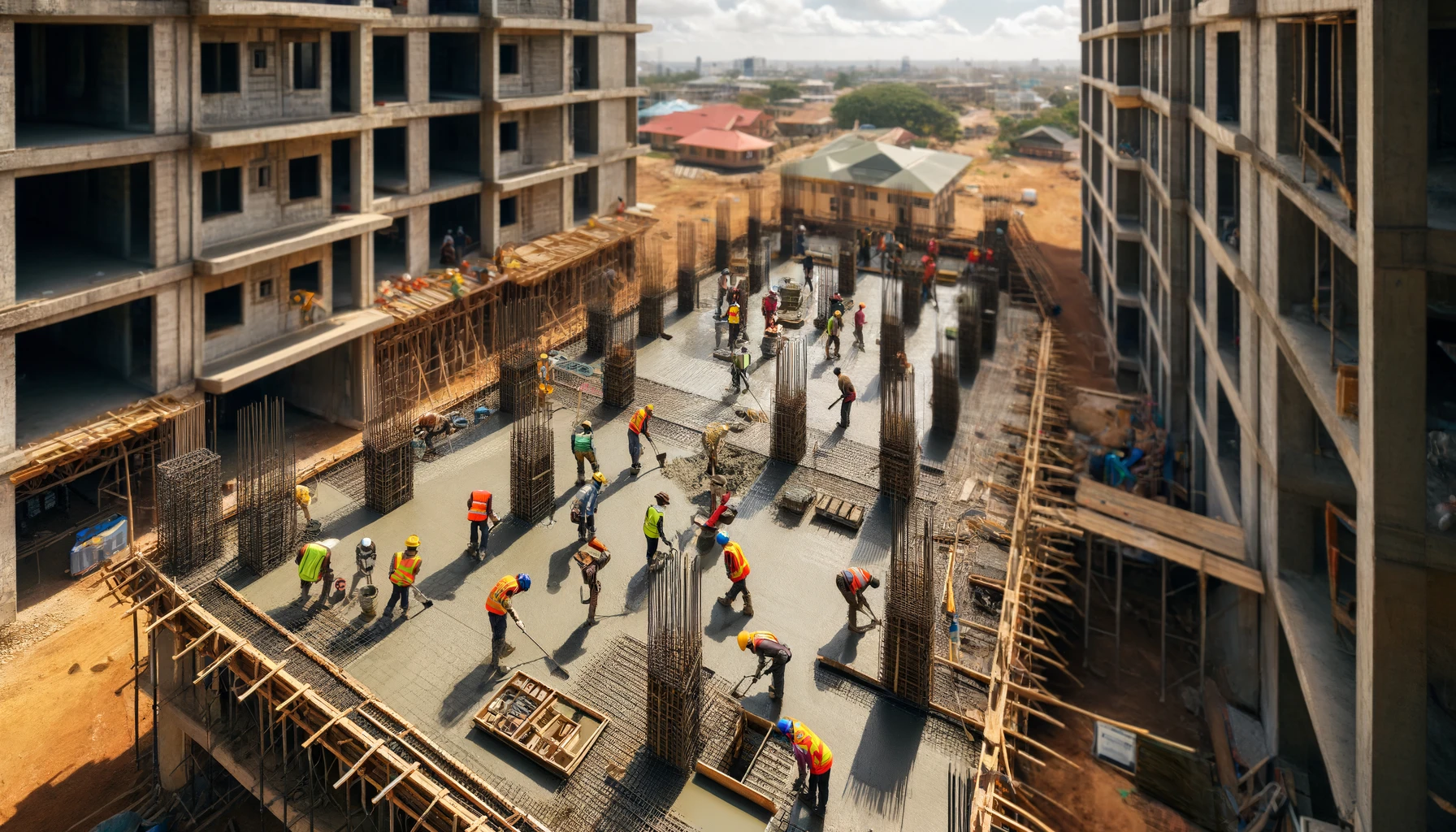Learn how land zoning in Kenya works — understand the legal framework, zoning categories, compliance steps, county-by-county requirements, risks and how investors can act safely. A complete guide for buying, developing or rezoning land in Kenya.
Introduction
Land zoning in Kenya plays a vital role in shaping how land is used and developed across counties. It defines what type of structures or activities can take place in a particular area — whether residential, commercial, industrial, or agricultural. Understanding zoning laws in Kenya helps investors and homeowners avoid costly mistakes and ensures compliance with county planning regulations.
For developers and investors, zoning affects everything from land value to the type of buildings you can put up. Buying land without checking its zoning status can lead to legal disputes or even demolition orders. That’s why every buyer should confirm the zoning category before any purchase or construction begins.
In this guide, you’ll learn what land zoning in Kenya means, the laws that govern it, the different zoning categories, and how to comply with the requirements before buying or developing property.
What Is Land Zoning in Kenya?
Definition of zoning vs general land-use regulation
Zoning in Kenya refers to the official system that divides land into specific areas or zones, each with permitted and restricted uses. For instance, land marked as residential cannot be used for heavy industrial activities. General land-use regulation, on the other hand, refers to the broader policies guiding how land is planned, developed, and conserved across the country.
While land-use policies provide national guidelines, zoning laws focus on practical enforcement at the county level. Counties implement these laws through zoning maps and local physical development plans, ensuring every development fits within its designated area.
Purpose of zoning — orderly development, safety, investment protection
The main goal of zoning is to promote orderly and sustainable growth. By assigning specific land uses to different zones, counties can manage traffic, control pollution, and maintain community safety.
Zoning also protects property owners and investors by maintaining consistency in land value. For example, residential neighborhoods are safeguarded from noisy industries or high-traffic commercial setups. This helps preserve peace, safety, and long-term property worth.
Additionally, zoning laws in Kenya support environmental conservation and ensure that public spaces like parks, schools, and roads are integrated within development plans.
Historical context — evolution of zoning in Kenya
Zoning in Kenya traces back to the colonial period when land use was segregated by race and function. However, after independence, zoning evolved to support equitable development and modern urban planning.
Today, under the Physical and Land Use Planning Act (2019), zoning is a national requirement managed at the county level. Counties are now responsible for creating zoning maps, approving developments, and enforcing compliance to promote sustainable and inclusive growth.
Kenya’s zoning approach continues to evolve, integrating modern trends such as smart cities, mixed-use developments, and green building initiatives that reflect changing economic and environmental needs.

Legal & Regulatory Framework
Main laws — Physical and Land Use Planning Act No.13 of 2019 (PLUPA)
The Physical and Land Use Planning Act (PLUPA) is the backbone of Kenya’s land zoning system. It outlines how land should be planned, subdivided, and utilised across counties. The Act ensures that all zoning decisions follow a structured process to balance public interest and private development. Every property owner or developer must align their projects with these zoning plans before seeking approvals.
Supporting regulations — Local Physical & Land Use Development Plan Regulations 2021
These 2021 regulations guide the implementation of zoning and land-use plans at the county level. They define procedures for preparing local physical development plans, change-of-use requests, and public participation requirements. They also help harmonise urban and rural land-use decisions with county integrated development plans (CIDPs).
Key institutions — National Land Commission, county governments, planning authorities
Kenya’s zoning system operates under a multi-agency framework. The National Land Commission (NLC) oversees land administration and policy enforcement. County governments handle day-to-day zoning decisions, permits, and local planning. Planning authorities and registered physical planners provide technical input on zoning maps, densities, and permitted land uses.
New updates from the 2025 Planning Handbook
The 2025 Planning Handbook, recently introduced by the Ministry of Lands, streamlines development control processes and introduces clearer zoning maps for fast-growing towns. It emphasizes digital zoning systems, environmental impact checks, and community-inclusive planning. These updates make compliance easier for developers and investors who need faster approval timelines.
Zoning Categories & Land Use Types in Kenya
Residential zoning (low, medium, high density)
Residential zones determine how densely people can live in a given area. Low-density zones allow single-family homes or bungalows, medium-density allows townhouses or small apartments, while high-density supports flats and high-rises. These classifications control population distribution, infrastructure demand, and quality of living standards.
Commercial zoning
This zoning allows for business activities such as retail, offices, hotels, and entertainment centers. Commercial zones are often located near transport hubs or mixed-use areas to encourage accessibility and economic growth. Compliance ensures that businesses don’t disrupt nearby residential peace or exceed noise, parking, or waste limits.
Industrial zoning
Industrial zones cater to manufacturing, warehousing, and logistics. They are located away from residential areas to reduce pollution and congestion. Developers must follow environmental and safety guidelines set by NEMA and county planning boards to obtain operational licenses.
Agricultural / conservation zoning
These zones protect Kenya’s agricultural lands and ecological areas. Activities here are limited to farming, agro-processing, or eco-friendly projects. Converting such land to residential or commercial use requires official change-of-use approval. This helps prevent urban sprawl and maintain food security.
Mixed-use & special economic zones
Mixed-use zoning allows blending of residential, commercial, and recreational uses within one project — ideal for modern estates and integrated developments. Special Economic Zones (SEZs), on the other hand, promote export-oriented and large-scale industrial activities, offering tax incentives and simplified regulatory frameworks.
Zoning-Specific Requirements & Standards
Plot coverage, setbacks, building height, density
Each zoning type in Kenya comes with defined development control parameters — how much land can be built on, how tall a building can rise, and how far structures must sit from boundaries.
- Plot coverage refers to the percentage of land occupied by buildings.
- Setbacks ensure proper spacing for safety, light, and ventilation.
- Building height and density are controlled to prevent overcrowding and maintain neighborhood character. For example, low-density residential zones may allow only 35% coverage and two stories, while high-density or commercial zones permit higher limits.
Environmental and EIA requirements
Before any major construction, developers must comply with Environmental Impact Assessment (EIA) regulations under NEMA. Zoning dictates the type of environmental checks required — for instance, industrial and commercial zones undergo stricter reviews than residential ones. Proper waste management, water drainage, and green buffers are often mandatory in compliance with both zoning and environmental standards.
Infrastructure & access standards
Zoning also governs infrastructure readiness — roads, drainage, water, power, and access routes. Counties only approve developments in zones with adequate infrastructure or those with developer-provided services. For gated estates, road widths, stormwater systems, and sewer connections must align with zoning and planning codes to avoid penalties or demolition orders.
County-by-county zoning variations and by-laws
While national laws provide a framework, county governments set unique zoning by-laws based on local needs. For instance, Nairobi, Kiambu, and Mombasa have customised zoning codes reflecting urban growth, while Nakuru and Machakos focus more on peri-urban expansion. Investors should always review county-specific zoning plans before purchasing or developing land to avoid future compliance issues.
How to Check Zoning Status Before Buying Land
Step-by-step process for verifying zoning
Before committing to a land purchase, verify the current zoning classification to avoid restrictions or penalties.
- Visit the County Physical Planning Office.
- Request the zoning map and development control sheet for that parcel.
- Confirm if the plot aligns with your intended use (residential, commercial, or industrial).
- Obtain written confirmation or a zoning compliance letter.
This process ensures your investment matches legal land-use permissions.
Using zoning maps, development plans, and county portals
Most counties now offer digital access to zoning information via GIS portals and physical development plans. For example, Nairobi City County provides zoning maps through its online portal, and similar systems exist in Kiambu and Mombasa. Reviewing these tools helps buyers understand boundary restrictions, road reserves, and permitted developments before making transactions.
Engaging surveyors, planners, and property lawyers
To avoid costly mistakes, engage professionals such as licensed surveyors, urban planners, or property lawyers. They interpret technical zoning data, verify land coordinates, and guide you through legal documentation. A qualified planner can also help initiate change-of-use applications if your intended project doesn’t fit existing zoning.

Applying for Development Permission & Change of Use
How to apply for development permission (requirements, fees, timelines)
Before construction begins, every developer must secure development permission from the county government under the Physical and Land Use Planning Act (2019). The process includes submitting:
- Architectural and structural drawings prepared by registered professionals
- Land ownership documents (title deed, mutation forms)
- EIA report, where applicable
- Application fee depending on project type and location
Timelines typically range from 30 to 90 days, depending on project complexity. Some counties now allow online submissions, speeding up review and feedback. Missing documents or non-aligned plans often delay approvals, so accuracy and professional assistance are essential.
Change of user (rezoning) — procedures and documentation
If the intended land use differs from its current zoning (for instance, converting agricultural land to residential), a change-of-user application is required. The steps include:
- Hiring a registered physical planner to prepare a justification report.
- Publishing a public notice for 14–30 days to allow community input.
- Submission to the County Physical Planning Committee for review.
- Approval by the County Executive Committee Member (CECM) in charge of planning.
Applicants must provide supporting documents like ownership proof, current zoning map, and location plan. Once approved, the zoning classification is officially updated on the county records.
Common mistakes to avoid during the process
Many developers face delays or rejections due to avoidable issues such as:
- Submitting incomplete documentation
- Ignoring EIA requirements
- Starting construction before permit approval
- Hiring unregistered professionals
Always confirm your consultants’ registration numbers with the Board of Registration of Architects and Quantity Surveyors (BORAQS) or Town Planners Registration Board (TPRB) to prevent costly penalties.
Zoning Compliance and Investor Impact
How zoning influences land value and investment decisions
Zoning plays a major role in determining land value and development potential. For example, land zoned for high-density residential or commercial use typically attracts higher prices due to its earning potential. Investors can use zoning maps to identify areas with future rezoning opportunities, especially near new highways, towns, or infrastructure projects. Strategic understanding of zoning can therefore maximise return on investment.
Legal and financial risks of non-compliance
Ignoring zoning rules can lead to construction stoppages, demolition orders, or legal fines. Counties also deny occupancy certificates for developments that violate zoning or environmental laws. Financial institutions often refuse to finance or insure such properties. Maintaining zoning compliance safeguards your investment and ensures smooth resale or leasing opportunities.
Case examples — residential vs industrial projects
A good example is the Athi River region, where zoning shifted from agricultural to industrial, causing land values to triple within a few years. Conversely, unapproved conversions in Nairobi’s Karen and Runda areas led to demolition notices. Understanding these contrasts helps investors evaluate both profitability and compliance risks before purchasing land.
Penalties & Risks of Ignoring Zoning Laws
Legal actions — demolition, stop orders, fines
Violating zoning laws in Kenya attracts serious legal penalties under the Physical and Land Use Planning Act (2019). County governments have the authority to issue stop-work orders, demolition notices, or site closure directives for non-compliant developments. Offenders may also face court injunctions and monetary fines that vary by county. Once a violation is recorded, restoring compliance often becomes costlier than following procedures from the start.
Financial loss and project delays
Ignoring zoning guidelines can lead to massive financial losses. Developers risk losing investments through halted projects, demolition costs, or denial of occupancy certificates. Financing institutions and insurance companies typically withdraw support when zoning irregularities are found. In severe cases, developers spend months — even years — rectifying documents or applying for retrospective approvals.
Disputes and mitigation strategies
Zoning violations often spark neighbour disputes, especially in residential areas where unapproved commercial activities arise. To prevent such conflicts:
- Conduct zoning checks before purchase or construction.
- Use qualified surveyors and planners.
- Engage the County Physical Planning Department early for clarity.If disputes arise, mediation through the County Physical Planning Liaison Committee or Land and Environment Court can help resolve them legally and fairly.

Emerging Zoning Trends in Kenya
Urbanisation, smart cities, mixed-use zoning growth
Kenya’s rapid urbanisation is driving a shift toward mixed-use and smart zoning models. Cities like Nairobi, Konza, and Eldoret are integrating residential, commercial, and recreational spaces within single developments to optimise land use and reduce commuting times. Counties are also embracing digital planning tools and GIS-based zoning systems for easier monitoring and enforcement.
2025 regulatory updates and planning reforms
The 2025 planning reforms focus on harmonising zoning standards across counties and promoting digital submissions for permits. The Ministry of Lands is also piloting a National Zoning Portal that will allow developers to access zoning data instantly. These reforms aim to reduce bureaucracy and promote transparency in Kenya’s real estate sector.
Green building and climate-adaptive zoning
Sustainability is now central to modern zoning policy. New guidelines encourage green building, solar-ready designs, and eco-sensitive layouts to address climate change. Developers are urged to integrate rainwater harvesting, renewable energy systems, and green belts within their projects. Counties such as Kajiado and Nakuru are already piloting climate-adaptive zoning plans for long-term resilience.
Zoning Checklist for Buyers & Developers
Pre-purchase — zoning confirmation, land title, development plan
Before purchasing any land in Kenya, always begin with zoning confirmation. Visit the County Physical Planning Office or check the county’s GIS portal to confirm the parcel’s zoning category. Ensure the land title deed matches the physical location and ownership details. Reviewing the Local Physical and Land Use Development Plan also helps you understand nearby land uses, future road reserves, and planned public utilities that could affect your investment.
During development — permit compliance, inspections
Once development begins, maintain full permit compliance. Display your approved development permission on-site and ensure that all construction follows the approved plans. Counties carry out random inspections to verify adherence to building codes, safety standards, and zoning restrictions. Keep copies of all submission receipts, inspection reports, and approval letters in case of future verification or audits.
Post-development — occupation certificate and compliance record
After completing your project, apply for an Occupation Certificate from the county. This certificate confirms that your building meets all zoning, safety, and structural requirements. It’s a vital document for connecting utilities, selling, or leasing the property. Maintaining a clean compliance record also boosts credibility with lenders, buyers, and insurers.
County-Level Zoning Insights
Nairobi zoning highlights (Nairobi County Physical Plan)
Nairobi County’s zoning is guided by the Nairobi Integrated Urban Development Master Plan (NIUPLAN). It divides the city into residential, commercial, and mixed-use corridors. High-density zoning dominates areas like Kilimani, Upper Hill, and Westlands, while Karen and Runda remain low-density. Developers must consult the Nairobi County Zoning Map before applying for building approvals to avoid conflict with the local by-laws.
Kiambu & Machakos variations
Kiambu County focuses on peri-urban growth zones like Ruiru, Thika, and Juja, promoting mixed-use development and industrial parks. Machakos County, on the other hand, supports residential estates, logistics hubs, and special economic zones near Athi River and Mavoko. Each county enforces its own zoning density limits, road reserve requirements, and environmental buffer zones. Developers must therefore tailor their projects to county-specific standards.
Coastal and upcountry zoning examples
In Mombasa and Kilifi, zoning emphasises tourism, hospitality, and marine conservation. Building heights are restricted near shorelines, and developments must comply with coastal setback laws. In upcountry counties such as Nakuru, Nyeri, and Eldoret, zoning plans balance agricultural preservation with growing urban centers. These regions are expanding their mixed-use and light-industrial zoning to attract investment while safeguarding farmlands.
Conclusion
Land zoning in Kenya is a vital framework that ensures orderly, safe, and sustainable development. From residential neighbourhoods to industrial parks, every land use category is guided by zoning laws that balance public welfare and private investment.
For investors and developers, understanding zoning before purchase or construction prevents legal disputes, delays, and costly penalties. Always verify your parcel’s zoning, follow county guidelines, and consult registered professionals for smooth approvals.
Action steps for investors or developers:
- Confirm the zoning classification before buying land.
- Hire qualified planners and architects for guidance.
- Apply for development permission and EIA clearance early.
- Keep a full compliance record for future property transactions.
CTA: Check your land zoning status today or consult a certified planning expert to ensure your project complies with Kenyan regulations.



